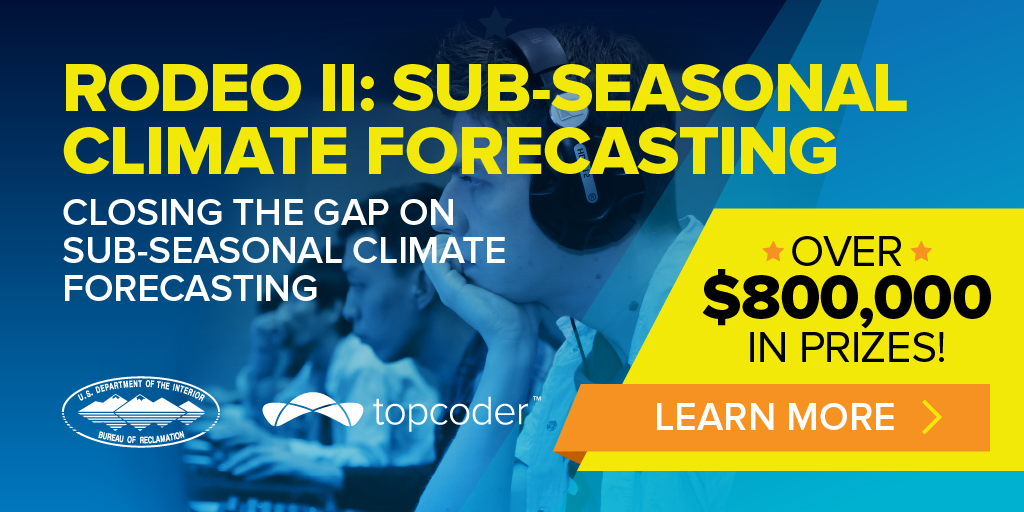
Launched June 27, 2019
News Release: Second sub-seasonal climate forecast rodeo provides potential solutions that may provide more time to prepare for weather extremes >>
More Information at Topcoder >>
January 2020 Update
-

The first forecasts of the year-long real-time portion of the competition were due October 14, 2019. The competition is structured as 26 "forecast sprints" every two weeks over the course of the year. Prize categories include awards for individual forecast, seasonal, and annual performance.
To date, teams have made six forecasts and the first four have been scored. Follow along at the leaderboard hosted by NIDIS.
September 2019 Update
The hindcast warm-up portion of Forecast Rodeo II concluded on August 25, 2019. Read more about the hindcast results here.
The year-long, real-time portion of Rodeo II kicks off on September 30, 2019, with the first forecasts due October 13, 2019. The competition is structured as 26 "forecast sprints" every two weeks over the course of the year. Prize categories include awards for individual forecast, seasonal, and annual performance.
Overview
Stemming from the success of Rodeo I (see below), Reclamation is partnering again with NOAA/National Integrated Drought Information System (NIDIS) on this Rodeo II competition. Rodeo II seeks to create algorithms to enhance sub-seasonal forecasting, reduce risks to our water systems, and help water managers efficiently manage hydrological regimes.
Improved sub-seasonal forecasts for weather and climate conditions (lead times ranging from 15-42 days and beyond) would allow water managers to better prepare for shifts in hydrologic regimes, such as the onset of drought or occurrence of wet weather extremes.
Sub-seasonal forecasting is challenging in that it encompasses the time frame where initial state information (e.g., coupled land-atmosphere processes) becomes less important and slowly varying long-term states (e.g., sea-surface temperatures, soil moisture, snow pack) become more important to predicition skill. Additionally, this information is needed 15 days to 45 days ahead of time, or even longer.Launch News Release
Hindcast Winners News Story
Challenge.gov Post
Contact
Ken Nowak | knowak@usbr.gov | 303.445.2197
prize@usbr.gov
ARCHIVE: Sub-Seasonal Climate Forecast Rodeo I
-

